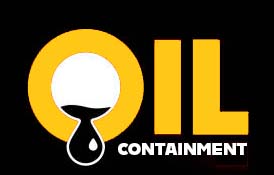In the oil industry, creating effective containment barriers is crucial for preventing environmental disasters and protecting workers. Secondary containment researchers play a vital role in ensuring that these barriers are properly designed and implemented. One common material used in containment barriers is polyurea, which is known for its durability and flexibility. In this article, we will discuss how to properly create containment barriers in the oil industry using polyurea.
Introduction to Containment Barriers
Containment barriers are systems put in place to prevent spills and leaks from reaching the environment. In the oil industry, these barriers are essential for containing any potential leaks from storage tanks, pipelines, and other equipment. If not properly designed and maintained, these leaks can have disastrous consequences, both environmentally and economically.
The Role of Polyurea in Containment Barriers
Polyurea is a popular choice for containment barriers in the oil industry due to its excellent chemical resistance, flexibility, and durability. It can be applied as a spray-on coating, which forms a seamless and watertight membrane. This makes it ideal for creating containment barriers in areas where there is a high risk of spills or leaks.
Designing Effective Containment Barriers
When designing containment barriers, it is essential to consider the specific needs and risks of the site. Factors such as the volume of potential spills, the type of materials being stored, and the surrounding environment all play a role in determining the best design for a containment barrier.
One key consideration when using polyurea is the thickness of the coating. A thicker coating will provide better protection against leaks and spills, but it may also require more material and time to apply. It is essential to strike a balance between cost and effectiveness when designing containment barriers.
Implementing Containment Barriers
Once the design is finalized, it is crucial to properly implement the containment barrier. This includes thorough surface preparation to ensure proper adhesion of the polyurea coating, as well as quality control measures to check for any defects or weaknesses in the barrier.
Regular inspections and maintenance are also essential to ensure the continued effectiveness of the containment barrier. Any signs of wear or damage should be addressed promptly to prevent potential leaks or spills.
Conclusion
Creating effective containment barriers in the oil industry is a critical task that requires careful planning and implementation. Polyurea is a valuable tool in this process, offering durability and flexibility in creating seamless and watertight barriers. By following proper design and implementation procedures, secondary containment researchers can help prevent environmental disasters and protect both the environment and workers in the oil industry.
